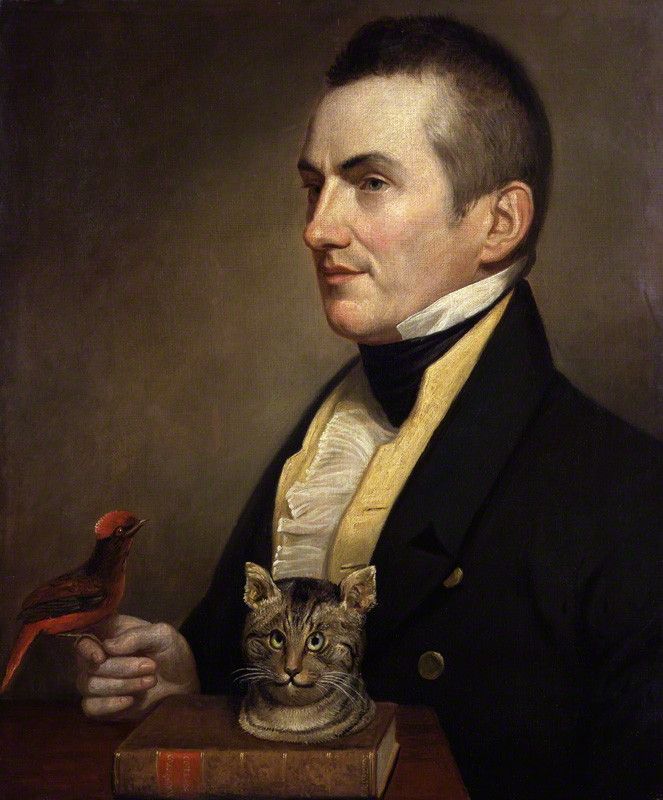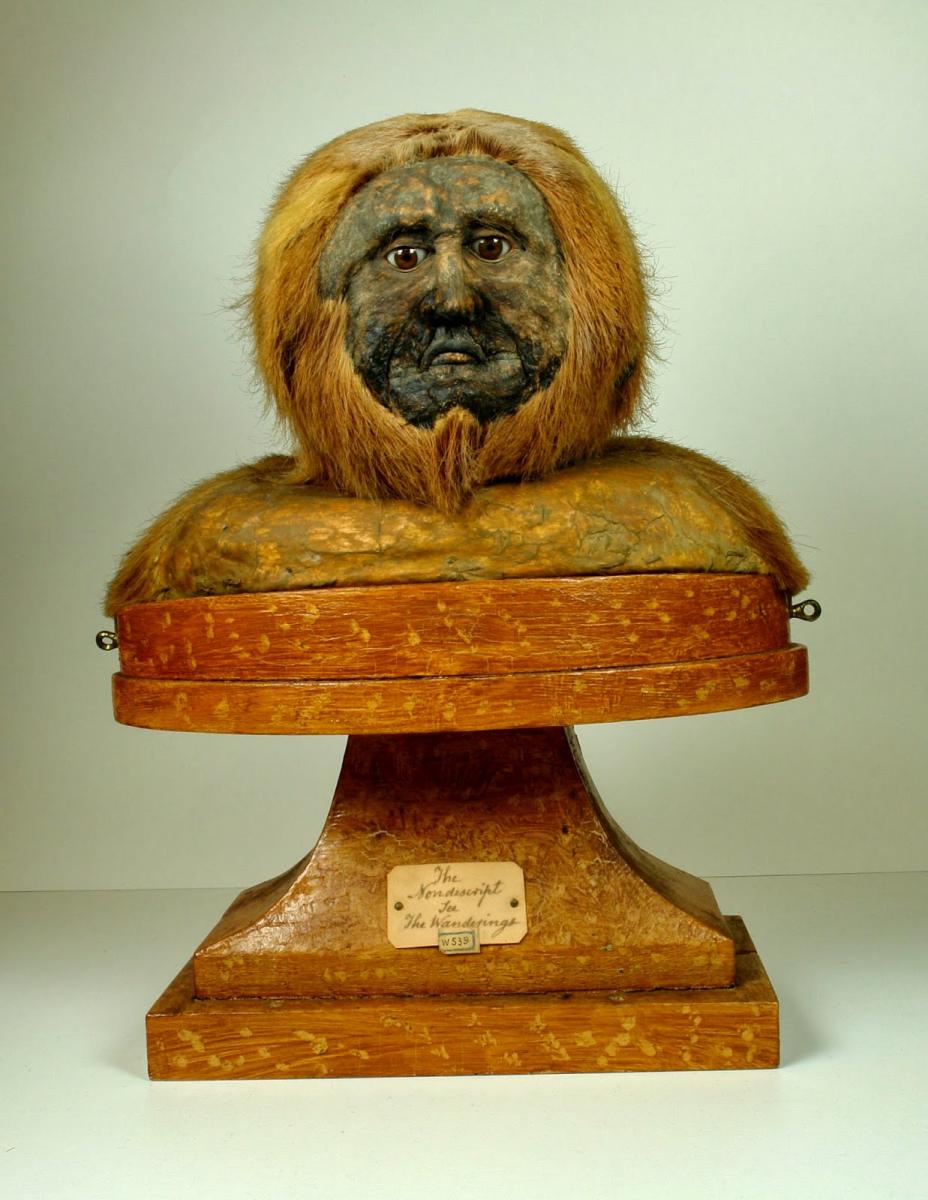1825: Charles Waterton and the ’Nondescript’
 Charles Waterton. [Larger version here]
Charles Waterton. [Larger version here]
In the early 19th Century, Charles Waterton [1782-1865] was a noted explorer and taxidermist (as the painting here shows, both animals being examples... not just the cat). Though he was famous during his life for many things, he is now remembered most for just one odd taxidermed animal, a creature that Waterton himself dubbed the 'Nondescript'.
Waterton had an uncle who owned estates near Georgetown in Guyana, South America, and in 1804 the 24-year-old taxidermist went there to take charge of the estates. Between 1812 and 1824, Waterton began to explore the much lessor known areas of the territory. The results of these explorations were two-fold: first, he filled his home, Walton Hall in Wakefield, Yorkshire, England, with taxidermed specimens of unusual fauna from Guyana as a sort of museum of his finds. Second, he wrote a book about his travels and adventures.
The book was called Wanderings in South America, and was published in 1825. It is a sort of travelog of Waterton's journeys about where he went, who he met, and what he experienced. While the book was not a scientific study or description of Guyana, it nonetheless inspired many people of a scientific mind -- such as Charles Darwin -- to later explore Guyana as well. And it is in this book that Waterton gives a description of how he ran across his specimen of the Nondescript, as well as presents an illustration of the specimen in the frontispiece of the book.

Illustration of the "Nondescript". [Larger version here]
While the book made public note of the specimen, controversy and rumors had already begun to spread regarding it previous to publication... this is because the Nondescript has a very distinctly human appearance to its face, although the rest of its visible body is hairy as a monkey.
Rumor had it that the Nondescript was a native man that Waterton had shot, and that Waterton had bribed customs officials to look the other way to bring the head into the country. In displaying the Nondescript in his museum, therefore, Waterton was boldly displaying evidence of a crime. Rumor further claimed that many professionals were fully knowledgeable of this, but ignoring it to avoid getting Waterton in trouble; his friends, many believed, were sick with worry over Waterton's mental and moral state of mind because of these matters.
Apparently in response to these rumors, Waterton included a few pages explaining how he acquired the specimen in his book... but he doesn't say much that's helpful. In short, he states the animal had a long tail, and that he contended himself with just the head and shoulders because the whole animal would have been too big to carry. More illustrative, however, was his observation that "Some gentlemen of great skill and talent, on inspecting his [the Nondescript's] head, were convinced that the whole series of its features has been changed. Others again have hesitated, and betrayed doubts, not being able to make up their minds, whether it be possible, that the brute features of the monkey can be changed into the noble countenance of man." Have a look, and see what you think:
 The actual specimen... a little worn by its age. [Larger version here]
The actual specimen... a little worn by its age. [Larger version here]
Though the rumors persisted for a short time, the general belief that replaced them was one voiced by various people who had closely examined the strange specimen and knew Waterton... that it was a howler monkey which Waterton had sculpted to resemble a human. Waterton had already shown a humorous creativity in a number of his other taxidermed creations, making displays featuring creatures crafted from parts of varying animals; and Waterton used his own unique method of preparing specimens that allowed for an extended period of time in which they could be manipulated before fully solidifying, so he had the time and opportunity to alter specimens in a variety of ways.
But why did he create the Nondescript and then create a false story about catching it? No one knows for sure, because Waterton himself never said. It's possible that he simply wanted to test whether or not experts could detect the fraudulent specimen; or that he wanted to use it as a form of curiosity to inspire other explorers to visit Guyana, an idea implied by Waterton himself in his book. A different set of rumors started to spread after the idea that he had created the Nondescript become generally accepted. This time the rumors claimed the Nondescript had been made to resemble a particular person, though the stories given varied quite a bit.
The Nondescript still exists, though it's showing it's age some. It is currently held in the collection of the Wakefield Museum in Wakefield, England, along with a large number of other specimens created by Waterton.
Anomalies -- the Strange & Unexplained, as well as my other website -- Monsters Here & There -- are supported by patrons, people like you! All new Anomalies articles are now posted for my patrons only, along with exclusive content made just for them. You can become a patron for just $1 a month!
|








